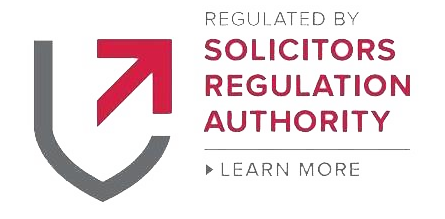COVID-19 – Job Retention Scheme June Update
Rishi Sunak has announced reforms to the Coronavirus Job Retention Scheme, including improved flexibility to bring furloughed employees back part-time in July.
The Scheme has so far helped a million employers across the UK with circa 8.4 million employees being furloughed.
Whilst we are awaiting updates to the Treasury Direction and specific employer’s guidance, what we know so far is that as of the 1st July 2020 employers will be able to bring furloughed employees back part-time, and will be able to decide the hours and shift patterns their employees will work upon their return. This flexibility is intended to give employers the ability to structure the return of employees back into the workforce, and if necessary, stagger the return of those employees. Any work undertaken by the employees will be paid at their full wages whilst at work.
The implications of the foregoing are clearly set out on the Government website and has confirmed that the Scheme update means that the following will apply for furloughed workers going forward:
June and July 2020; the Government will pay 80% of wages up to a cap of £2,500 as well as employer national insurance and pension contributions. Employers are not required to pay anything.
August 2020; the Government will pay 80% of wages up to a cap of £2,500. Employers will pay employers national insurance contributions and pension contributions. For the average claim this represents 5% of the gross employment cost the employer would have incurred had the employee not been furloughed.
September 2020; the Government will pay 70% of wages up to a cap of £2,187.50. Employers will pay employers national insurance contributions and pension contributions and 10% of wages to make up to 80% total up to the cap of £2,500. For the average claim, this represents 14% of the gross employment cost the employer would have incurred had the employee not been furloughed.
October 2020; the Government will pay 60% of wages up to a cap of £1,875. Employers will pay employers national insurance contributions and pension contributions and 20% of wages to make up 80% total up to the cap of £2,500. For the average claim, this represents 23% of the gross employment costs the employer would have incurred had the employee not been furloughed.
(Note: above bullet points taken from Gov.uk website)
As always, the devil will be in the detail, and we await to find out further information by means of Treasury Direction update as to how this will actually work in practice.
What is significant from what we know so far is that the impact of the foregoing means that the introduction of part-time furloughing to support those already furloughed back to work can be claimed from July onwards which will mean that the Scheme will close to new entrants as of the 30th June 2020. Accordingly the last date upon which employers can place employees on furlough is the 10th June 2020, allowing for the 3 week furlough cycle to take place before the Scheme ends on the 30th June 2020.
The flexibility in the Furlough Scheme being described by many leading business voices as a true lifeline will enable employers to strike a careful balance that will help many companies bring furloughed staff back into the workforce over the course of the next few months.
The flexibility intended by the amendments to the Scheme will enable employers to agree any work arrangements with previously furloughed employees. However, we must emphasise that the Scheme is subject to the usual terms of employment and employment contracts. Accordingly, our advice would be that it is essential to record any variation in writing to the previous contractual hours in order to eliminate any potential claims for unilateral variation of contract / unlawful deduction of wages.
When claiming under the Scheme for furloughed hours, employers will also need to report and claim for a minimum period of a week, so that grants can be calculated accurately across working patterns. HMRC have already stated that they will not hesitate to take action against any companies who are found to be abusing the Scheme, and employees who believe they are not getting their 80% share can also report any concerns to the HMRC Fraud Hotline. People Management, a whistleblowing charity, has reported that they believe furlough fraud claims are on the rise with over a third of all Coronavirus disease related calls received by the whistleblowing charity being made by employees reporting their employer’s misuse of CJRS. Of those reports many informants have allegedly disclosed a range of fraudulent activities including employers forcing staff to work despite being furloughed. When the CJRS was first announced, it was made clear that employers would be required to retain accurate records for a period of up to 6 years beyond the Furlough Scheme. It is therefore more important than ever to ensure that if your employees are furloughed, they do not undertake any work or perform any services for your company. If you are going to utilise the flexible furlough as of the 1st July 2020, accurate and detailed records of what has been agreed with your employees in terms of potential part-time working and a variation to the previous contractual hours is going to be essential.
We will of course keep you updated as and when further detail from the Treasury is issued and employer’s guidance is updated.
The announcement by Rishi Sunak on Friday also brought welcomed news to self-employed individuals. The Government self-employment income support scheme is also going to be extended, with those eligible being able to claim a second and final grant capped at £6,570. Individuals can continue to apply for the first self-employment income grant until the 13th July 2020 with eligible individuals being able to claim a taxable grant of 80% of their average monthly trading profits and capped at £7,500. Applications for the second grant will open in August 2020 (exact date to be confirmed). We also understand that an individual does not need to have claimed the first grant in order to make an application for the second grant.
We have been advising our clients for weeks that companies really need to take stock and look at their strategy to introduce employees back into the workforce and to kick start their businesses. It is hoped that the extension and flexibility for the Furlough Scheme going forward will provide businesses with the ability to plan, restart and recover from the catastrophic effects Covid-19 has had on the economy.
If you require any further information regarding the Coronavirus Job Retention Scheme or any other employment matter, please do not hesitate to contact a member of our Employment Team.
Article by Angela West.
Do you have any questions about the job retention scheme?
Contact us today.





